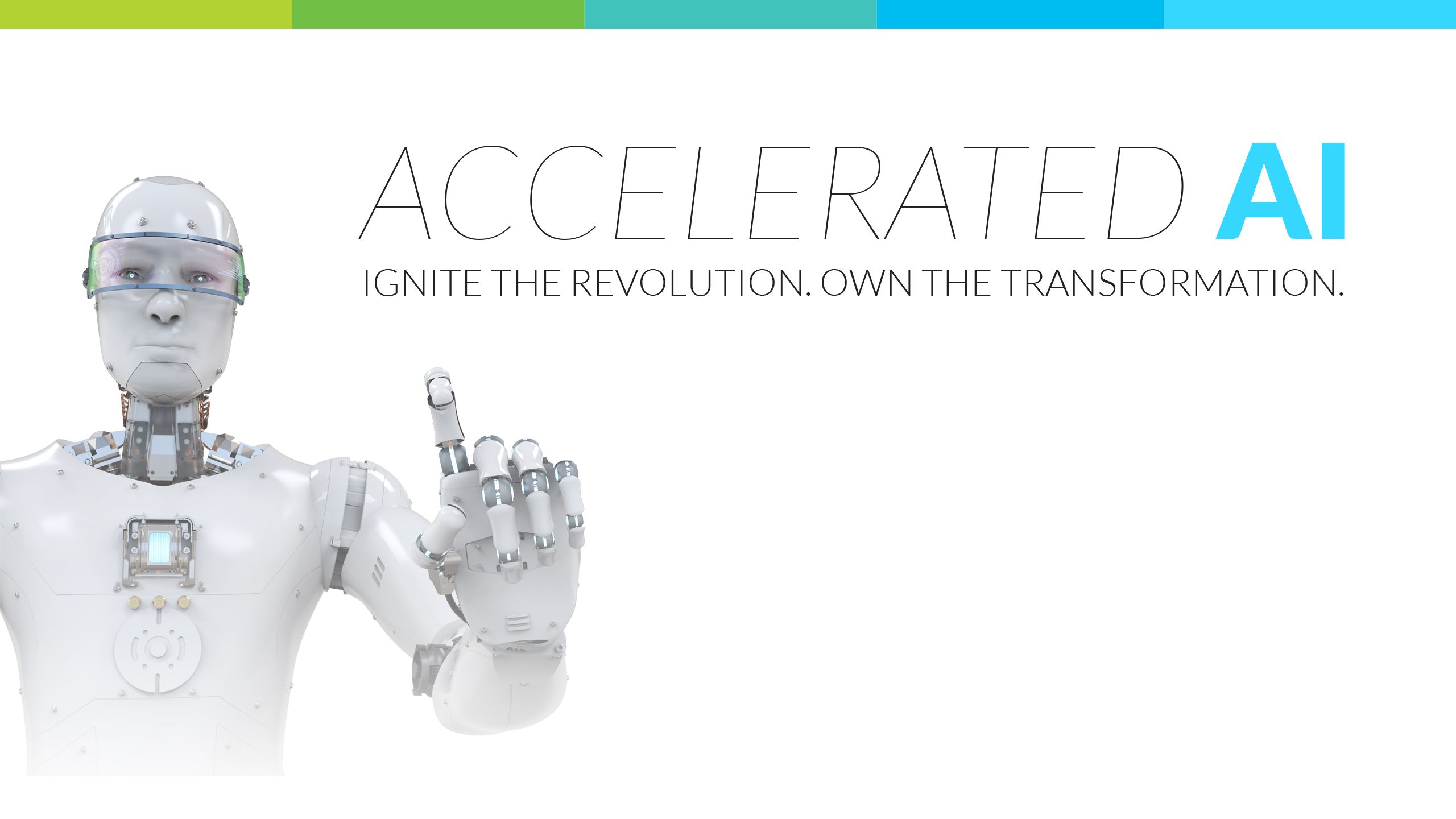The Power of Good:
AI Comes of Age for Government


GAI, Dell EMC and NVIDIA are working together to help agencies accelerate their path to artificial intelligence in order to drive mission success.

Artificial intelligence has already transformed the way we shop, travel and stay in touch with friends and family.
Government is the next frontier.
“Every CIO we know is working hard to understand AI and push their organizations to put AI to work,” says Jay Lambke, president of GAI and a long-time government IT veteran. He’s leaning forward, voice rising for emphasis. “The CIOs understand AI is not just ‘the next wave’ — it’s a tsunami. A tectonic shift. AI is going to impact every part of our professional and personal lives. They want to be ready.”
AI is here now, but organizations aren’t universally ready. The technology is still new and not yet widely understood across the spectrum of stakeholders.
“We see a gap between the aspirations of agency leaders and the practical capabilities of the career people who own the lines of business, do the work and own the resources,” Lambke says. “Those mission owners don’t necessarily have time to think about how AI might help them do things differently. They need practical knowledge to be able to see what’s actually possible now.”
Their reality is current operations. They need help imagining what is actually possible. To assist agency leaders with this challenge, GAI is collaborating with its partners Dell EMC and NVIDIA to develop workshops and practical training to help close that knowledge gap.
Early Adopters of AI
Just as with past technological revolutions – flight, rocketry, space, computers – the early adopters are in defense and intelligence, agencies driven to gain tactical and strategic advantage on threats and competitors. Faced with increasingly sophisticated enemies and driven to stay at the leading edge of technology, intel and defense leaders are investing in AI both to help identify threats more quickly and to gain the upper hand in every domain, from land and sea to air, space and cyber.
AI holds promise to accelerate image and video analysis, automate software development and security, improve communication and reduce risk to life and limb with unmanned and remotely piloted systems. Natural language processing could accelerate and automate intelligence analysis and improve military training. All of these fit into a national military strategy designed to make US forces more agile, more lethal and more ready for whatever threats emerge from current or potential adversaries.
The Department of Homeland Security is similarly driven to apply AI in a range of applications ranging from identity verification to cybersecurity and threat assessment. AI can help identify insider threats, cyber intrusions, and more importantly patterns of behavior to help identify threats more quickly.
“What’s exciting now is we’re also seeing more and more purely civilian agencies coming forward,” Lambke says. “They’re seeing what’s possible in the private sector, and they’re looking for ways to put that to work in their own agencies, things like natural language processing, that could really make a huge difference in the way citizens engage with government agencies.”
Lambke cites a large telecom business which found that 90 percent of the calls fielded by customer service teams were variations of just 25 questions. “That’s a perfect use case for AI,” he says. Using AI-driven natural language processing, most queries could be solved without human intervention and without frustrating callers. That meant staff had more time to address the remaining 10 percent of cases.
Increased automation in call centers also simplifies call center structures. “Training a machine to do this is powerful because you can deliver more consistent service to more people, while reducing stress on existing staff,” Lambke says.
That same approach can also apply in areas where demand for specialized talent outstrips supply. Consider high-skill specialties like cybersecurity, software development and network engineering, all skills in short supply. AI can’t replace that talent, but it can augment it. Automated tools can assume basic or routine tasks, such as testing software for bugs or assuring security settings, for example, increasing the time skilled individuals can apply to other more demanding tasks.
AI isn’t about replacing people,” Lambke says. “It’s about enabling and empowering them.
AI for Good
With some CIOs and developers already convinced AI will help solve their agencies’ problems, the challenge today is building the partnerships across organizations that can move AI from concept to viable pilots and from pilots into practical use.
“It starts with education,” Lambke says. “Executives and managers need a deeper understanding of where AI can help and how it can completely transform workflows and processes.”
Consider cybersecurity, for example. The volume of threat indicators and security alerts network defenders see today are staggering. Attacks are increasingly automated, so defense must be automated, as well. AI is critical to that process.
“AI can identify, understand and act on patterns from masses of cyber data faster and more effectively than people can,” Lambke says.
Other applications that can leverage AI’s capacity for rapid pattern recognition include identifying waste, fraud and abuse in billing or claims data; spotting anomalous behavior in insider threat programs; facial recognition for workplace security or to confirm identity in airports; predictive medicine and more.
“That’s what I call ‘AI for good,'” Lambke says: “AI helping government deliver better outcomes.”
Getting Started

There’s no magic bullet for launching an AI initiative. But often success comes when managers can build support with critical agency stakeholders and test AI possibilities through pilot projects.
“Start small,” Lambke advises. “Do proofs of concepts. Pilot solutions on a small scale before you try anything large.”
The best opportunities are situations where tasks are repetitive and predictable: processing paperwork for payment, for example, or managing a system in a datacenter. “The more we can offload rote processes to machines, the more we can focus our brainpower on higher-level skills,” Lambke says. “That makes the job more productive, and also more enjoyable.”
AI is already touching us everyday, in how we shop, the music we listen to, the social media feeds we see, even the news we read on our phones. AI can intervene when someone tries to abuse our credit cards and alerts us when we can save time by taking an alternative route to work. Before long, AI will take over the driving entirely. In fact, Lambke says, he doubts his grandchildren will ever drive a car, let alone own one.
AI will have no less a profound impact on government – not just in the way citizens and businesses interact with federal agencies, but also in how federal agencies enable our economy and national defense. Virtually every aspect of government stands to be transformed and improved with the benefit of artificial intelligence. That’s the whole point, Lambke says. AI will make our interactions with government better and make government’s work more effective. “That’s not just AI. It’s AI for good.”
Government Acquisitions, Inc. works side-by-side with federal IT executives and industry-leading OEM partners to modernize, optimize, and deliver unparalleled missions support. Learn more about GAI here.







